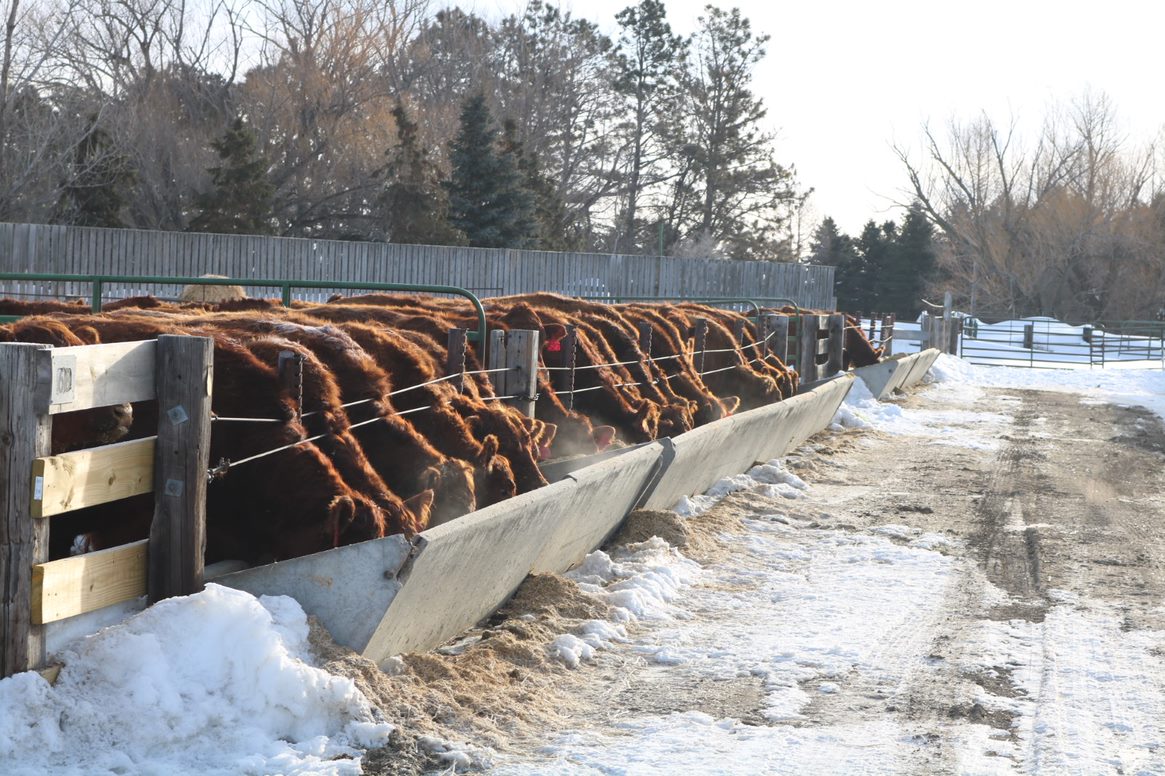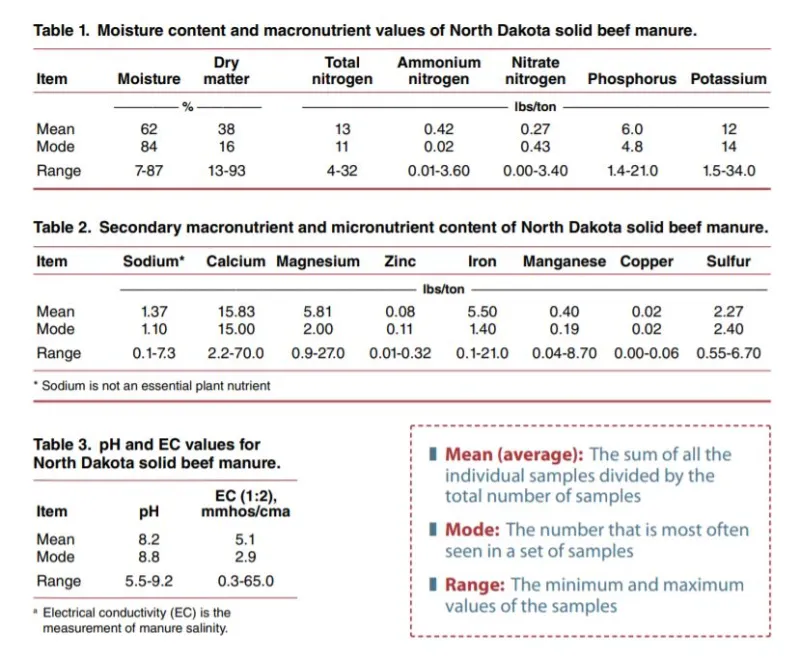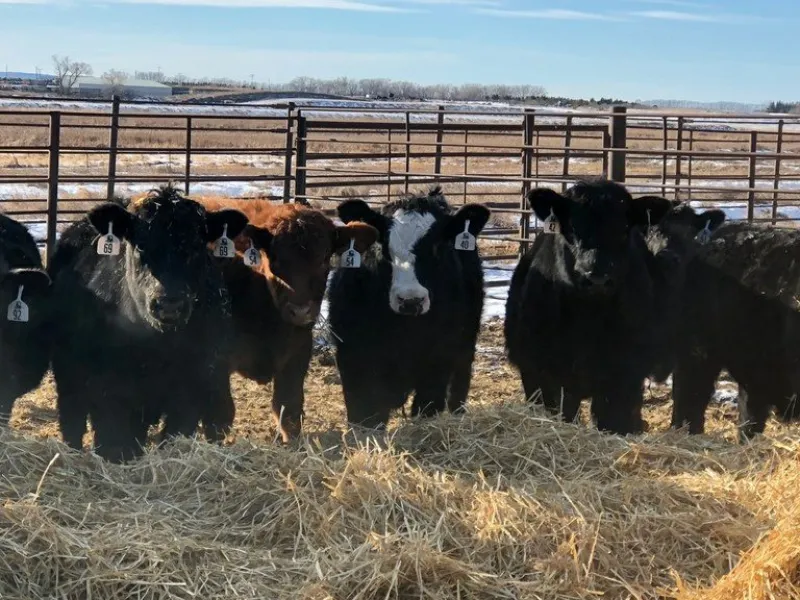In 2019, North Dakota had 995,000 head of beef cows and 42,000 head of cattle on feed (National Agricultural Statistics Services, 2020). A 1,000-pound beef cow in confinement and a 750-pound finishing beef cow will produce, on average, an estimated 54 pounds and 37 pounds of manure per day, respectively (Midwest Plan Service, 2004).
These numbers indicate that in 2019, approximately 55,284,000 pounds of manure were produced by beef animals in North Dakota. The manure has useful nutrients that are an effective agronomic fertilizer that also can improve soil health.
Solid beef manure contains the primary macronutrients nitrogen, phosphorus and potassium, as well as secondary macronutrients and several micronutrients. For more information on using manure as a fertilizer in North Dakota, refer to the publication NM1629, North Dakota Manure Fertilizer Use Recommendations. NM1259, “Solid Manure Sampling for Nutrient Management Planning,” has information on how to test manure for nutrients properly.
Manure nutrient content can be impacted by several variables, such as North Dakota’s dynamic climate and available feedstuffs for cattle (Lardy et al., 2015). Animal diet and maturity also can impact nutrient content.
As an animal grows to maturity, protein requirements decrease and carbohydrate forms change, thereby decreasing the concentration of these nutrients excreted as a percent of body weight. Similarly, increased levels of minerals fed to livestock (e.g. copper, phosphorus, sodium) increase the levels of those nutrients in the manure (Midwest Plan Service, 2004).
A project was created to test and identify what nutrients are specifically available in North Dakota’s beef manure. From 2011 to 2013, 192 solid beef manure samples were collected across North Dakota and analyzed for nutrient content. Tables 1, 2 and 3 summarize the results of the analyses. The samples were collected from a range of beef cattle varying in gender, physiological animal state, time of year, location and feedstuffs offered.



